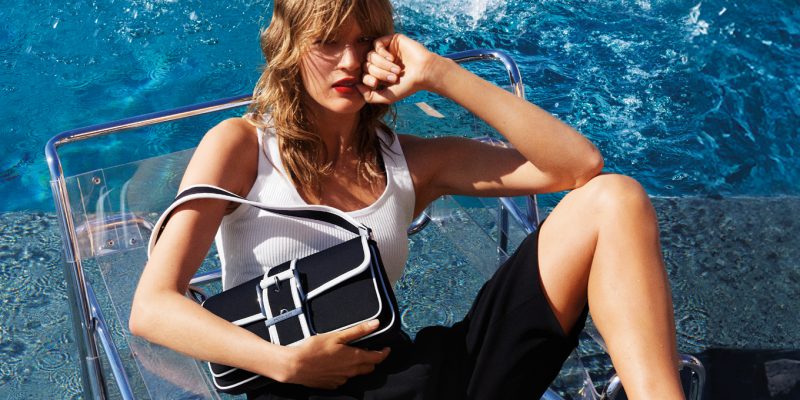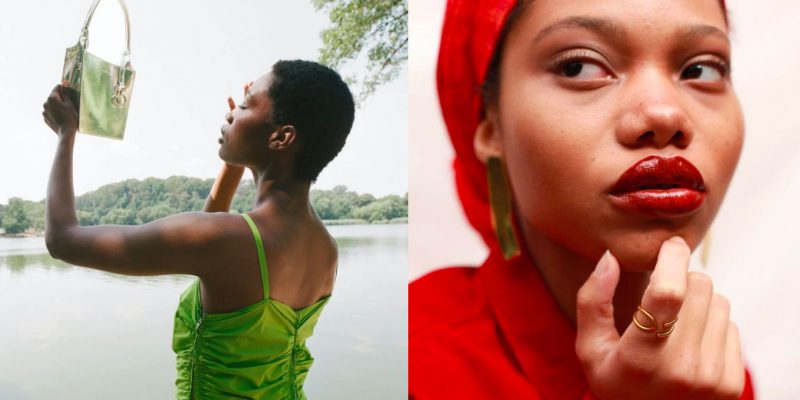Shopping
Does shopping truly make you happy?
Exploring why we buy—and how retailers are cashing in.
by : Liz Guber- Oct 10th, 2017

A few days before sitting down to write this piece, I bought a pair of Gucci clogs. These were no ordinary shoes. They were quirky little numbers; I had coveted their sturdy wooden soles and ornate floral brocade for months. My love went deeper than pure aesthetic appreciation, though. A pair of Gucci shoes—like everything by the It brand—has become a signifier of a certain kind of fashion-crowd in-ness. Two interlocking Gs or a gilded horsebit detail may as well be a badge of sartorial superiority—just look at the crop of street-style shots from any Fashion Week in the world for proof. With this justification swirling in my mind, it was easy to triumphantly say “I’ll take them” after a few turns in front of the mirror…even though I knew that the high I felt would likely be fleeting.
You see, prior to this indulgence, I spoke with fashion psychologist Carolyn Mair, so I was armed with the knowledge of my brain’s inner workings when it comes to racking up new purchases. “The kind of pleasure we get from shopping, that release of dopamine, is associated more with the desire than the getting,” she explained. “As soon as we buy something, the dopamine level drops.” Objectively, I knew this, but I couldn’t override the need I felt to own the baroque beauties. Even the piercing pang of regret that hit me as soon as the receipt printed won’t deter me from spending again, says Mair, who consults fashion retailers on consumer behaviour (and was a long-time professor of psychology at the London College of Fashion). “Research shows that the guilt we feel after an impulse purchase makes us feel good, so we repeat the experience,” she says. “We like feeling naughty.” (That’s something to consider the next time you find yourself in a checkout line fortified with those just-one-more-thing temptations.) Besides, I’ll start coveting something else once the sheen of newness wears off.
My reactions are exactly what retailers are banking on. They know our impressionable, novelty-obsessed brains, and they know that we bore of our purchases like lazy house cats half-heartedly batting around an old toy mouse. We’re bound to an endless search for the next fashion fix.
It’s not that shoppers today don’t deserve some credit. Thanks to the Internet—and, by extension, social media—we’re more knowledgeable than ever about trends, brands and where to find the best bargain. And our shifting, digitally driven habits have sparked a retail revolution. “Brands have realized that it’s no longer about telling the consumer what’s hot; it’s about listening to h what the consumer wants,” says Tamara Szames, apparel and footwear industry analyst at trend forecaster NPD Group. Indeed, thanks to an endless stream of online images as inspiration, I zeroed in on those Guccis without the help of a perky sales associate. But if salespeople aren’t helping us spend, what is?
Sometimes it’s about more than the thrill of the buy or the need to acquire more stuff. According to Szames, we seek transformation. “The expectation of what a retailer can do [for a consumer] has gone up significantly,” she says. Brands are responding to this desire with in-store extras like yoga classes, food stations and personalization services to make us feel good about what we’re buying (hi again, dopamine); they make us feel like we’re spending on an experience, not just an object. This also keeps us in the store longer, which correlates with how much we buy. Aritzia’s recently redesigned store concept, which sacrifices precious floor space to comfy lounge areas with coffee-table books and artwork, is how the retailer invites us to stay a while; Frank & Oak’s Montreal and Toronto flagships feature coffee shops to encourage lingering.
These happy-making spaces also play into the growing trend of curating a lifestyle and make us “feel like we are portraying the person we believe ourselves to be,” says Mair. It’s also why retailers such as Urban Outfitters and H&M, once primarily known for clothing, are expanding into the home and beauty categories to attract spending from all sides. “You used to go to the mall in search of one thing, like a cute top,” says Szames. “Today, you go to the mall and say ‘I have $100 to spend’ and you’ll look at shoes, tops or candles. Now, stores have to fight for your money across multiple categories.”
As purchasing power shifts from baby boomers to millennials, savvy retailers are leaning more digital: replacing shelves with screens that suggest matching pieces or drive social-media sharing and websites that encourage Webrooming—the now-common practice of looking something up online before buying in-store. In the race for a bite out of a millennial’s budget, digital-first brands like Warby Parker are winning. The direct-to-consumer eyewear company is capitalizing on the success of its online model thanks to its affordable, middleman-cutting approach IRL. “The stores are the new home page,” says Anna Vichicholchai of California-based retail-strategy firm RetailNext. “As consumers, we don’t think about online shopping versus in-store shopping. We think about the brand itself.”
Vichicholchai also predicts that the biggest consumer-driven trend in retail will be smaller stores displaying fewer products. “The new concepts feature less-traditional merchandising and allow customers to interact digitally,” she says. “Even big-box stores are opening smaller locations where customers can be more engaged.” One example is Nordstrom Local, which is set to open in West Hollywood. The new concept measures in at a fraction of the square footage of the typical department store and won’t have any physical stock—all inventory will be pulled from online or nearby locations. This smaller-is-better forecast is echoed by Mair, who sees the shift to neighbourhood-focused stores with less selection on the floor (but more available at the touch of a screen) as a response to the fast pace of our days and our desire to live more mindfully—shopping included. But even a limited offering needs to occasionally surprise the shopper, reasons Mair. “You want to be inspired by something,” she says. “If you know exactly what you want, it spoils the fun.”
While the “how” in our shopping game might be changing, the “why” remains the same. “We all want to belong, and, at the same time, we want to feel different,” says Mair. As long as stores can make us feel unique while simultaneously offering the comfort of community, we’ll continue to tap our credit cards. (Inserting the chip is much too inconvenient.) And sometimes a pair of shoes is just too good to resist. Yes, the joy is ephemeral, but I’m okay with that.
This article was originally published in the November 2017 issue of ELLE Canada.
Newsletter
Join our mailing list for the latest and biggest in fashion trends, beauty, culture and celebrity.
Read Next

Fashion
H&M's Latest Designer Collab With Rokh Just Dropped (And It's So Good)
We chatted with the emerging designer about the collaboration, his favourite pieces and more.
by : Melissa Fejtek- Apr 18th, 2024

Culture
5 Toronto Restaurants to Celebrate Mother’s Day
Treat your mom right with a meal at any of these amazing restaurants.
by : Rebecca Gao- Apr 18th, 2024

Beauty
Tested and Approved: Your New Hydrating Skincare BFF
This new product has all of your skin’s thirst-quenching needs covered.
by : ELLE Canada- Apr 17th, 2024




